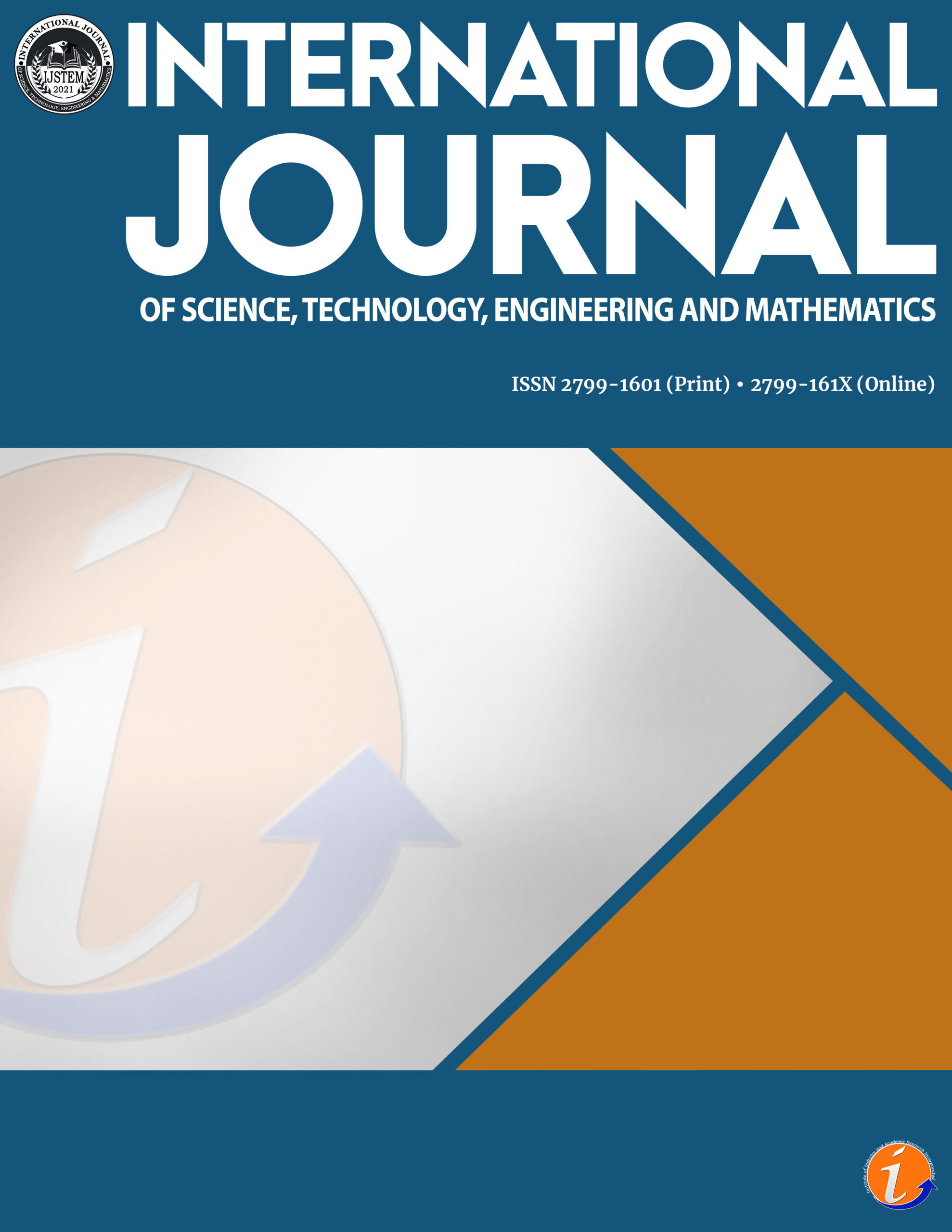Many students perceive mathematics as an abstract because it involves development of problem-solving skills. This study employed problem-based learning (PBL) approach to make simple strategies in the teaching and learning process. This study used descriptive-correlational research method. For the school year 2020-2021, 40 Grade 9 students from Calamba City Science High School took the validated adapted-modified three-item examination and answered a researcher-made survey questionnaire. The results showed no significant relationship between respondents' perceptions of problem-based learning in terms of authentic problem, collaboration, developing expertise, and authentic assessment, and their problem-solving performance in terms of conceptualizing the problem, devising a strategy, implementing the strategy, and reflecting on the solution. The study affirms that the teacher's expertise in implementing the PBL approach is critical. Further results imply that the learning abilities and techniques of the students have significant impact to the teaching-learning process.
students’ perception, authentic problems, collaboration, developing expertise, authenthic assessment, problem-solving skills
Jerlyn B. Arbo. Undergraduate Student at Laguuna State Polytechnic University, San Pablo City Campus.
Delon A. Ching. Instructor I, Laguna State Polytechnic University- San Pablo City Campus
This paper is a finalist in the IIARI Research Competition (IRC) – 2021 Category 2 – Undergraduate
Ali, S. S. (2019). Problem based learning: A student-centered approach. English language teaching, 12(5), 73-78.
Arthur, C., Badertscher, E., Goldenberg, P., Moeller, B., McLeod, M., Nikula, J., & Reed, K. (2017). Strategies to Improve All Students’ Mathematics Learning and Achievement. Education Development Center, Inc.
Bevan, D., & Capraro, M. M. (2021). Posing creative problems: A study of elementary students’ mathematics understanding. International Electronic Journal of Mathematics Education, 16(3), em0654.
Borwick, J., (2013). A3 thinking: understand problems before trying to solve them.
Carrió, M., Larramona, P., Baños, J. E., & Pérez, J. (2011). The effectiveness of the hybrid problem-based learning approach in the teaching of biology: a comparison with lecture-based learning. Journal of Biological Education, 45(4), 229-235.
Ching, D. A. (2020). Two Cubed Approach in a Collaborative Classroom and the Enhanced Algebra and Social Skills of College Students. Universal Journal of Educational Research, 8(10), 4920-4930.
Dahar, R. W. (2011). Teori-teori belajar dan pembelajaran. Jakarta: Erlangga, 136, 141.
Dostál, J. (2015). Theory of problem solving. Procedia-Social and Behavioral Sciences, 174, 2798-2805.
Ersoy, E., & Guner, P. (2014). Mathematics teaching and mathematical thinking. Journal of Research in Education and Teaching, 3(2), 102-112.
Fritz, A., Haase, V. G., & Rasanen, P. (2019). International handbook of mathematical learning difficulties. Cham, Switzerland: Springer.
Goforth, C. (2015). Using and interpreting Cronbach’s alpha. University of Virginia Library, 15.
Gurat, M. G. (2018). Mathematical Problem-Solving Strategies among Student Teachers. Journal on Efficiency and Responsibility in Education and Science, 11(3), 53-64.
Hähkiöniemi, M., & Francisco, J. (2019). Teacher guidance in mathematical problem-solving lessons: Insights from two professional development programs. In Problem solving in mathematics instruction and teacher professional development (pp. 279-296). Springer, Cham.
Hendriana, H., Johanto, T., & Sumarmo, U. (2018). The Role of Problem-Based Learning to Improve Students’ Mathematical Problem-Solving Ability and Self Confidence. Journal on Mathematics Education, 9(2), 291-300.
Ibañez, E. D., Subia, G. S., Medrano-Allas, S., Mendoza, J. I., & Mina, J. C. (2021). Modern Mathematics Applications: Solutions to Challenges Encountered in Teaching Spiral Progression in Mathematics 7. Open Access Library Journal, 8, e7623.
Kalogeropoulos, P., Roche, A., Russo, J., Vats, S., & Russo, T. (2021). Learning Mathematics from Home during COVID-19: Insights from Two Inquiry-Focussed Primary Schools. Eurasia Journal of Mathematics, Science and Technology Education, 17(5).
Klerlein, K., & Hervey, S. (2019). Mathematics as a complex problem-solving activity.
Koçyiğit, S. (2011). Otantik Görev Odaklı Yapılandırmacı Yaklaşımın öğretmen Ydaylarının Başarılarına, Derse Karşı Tutumlarına ve Problem çözme Becerilerine Etkisi (Doctoral dissertation, Marmara Universitesi (Turkey)).
Kojo, A., Laine, A., & Näveri, L. (2018). How did you solve it?–Teachers’ approaches to guiding mathematics problem solving. LUMAT: International Journal on Math, Science and Technology Education, 6(1), 22-40.
Lehtinen, E., Hannula-Sormunen, M., McMullen, J., & Gruber, H. (2017). Cultivating mathematical skills: From drill-and-practice to deliberate practice. ZDM, 49(4), 625-636.
Lein, A. E., Jitendra, A. K., & Harwell, M. R. (2020). Effectiveness of mathematical word problem solving interventions for students with learning disabilities and/or mathematics difficulties: A meta-analysis. Journal of Educational Psychology, 112(7), 1388.
Li, Y., & Schoenfeld, A. H. (2019). Problematizing teaching and learning mathematics as “given” in STEM education. International Journal of STEM Education, 6(1), 1-13.
Mazana, Y. M., Suero Montero, C., & Olifage, C. R. (2019). Investigating students’ attitude towards learning mathematics.
Mills, K., & Kim, H. (2017). Teaching problem solving: Let students get ‘stuck’and ‘unstuck.’Brookings.
Ng, L. K., & Dindyal, J. (2016). Examples in the teaching of mathematics: teachers’ perceptions. In Developing 21st Century Competencies In The Mathematics Classroom: Yearbook 2016, Association Of Mathematics Educators (pp. 189-211).
Ní Fhloinn, E., Fitzmaurice, O., Mac an Bhaird, C., & O’Sullivan, C. (2014). Student perception of the impact of mathematics support in higher education. International Journal of Mathematical Education in Science and Technology, 45(7), 953-967.
Nilson, L. B. (2010). Teaching at its best: A research-based resource for college instructors (2nd ed.). San Francisco, CA: Jossey-Bass.
Nurkaeti, N. (2018). Polya’s strategy: an analysis of mathematical problem solving difficulty in 5th grade elementary school. Edu Humanities| Journal of Basic Education Cibiru Campus, 10(2), 140.
Özreçberoğlu, N., & Çağanağa, Ç. K. (2018). Making it count: Strategies for improving problem-solving skills in mathematics for students and teachers’ classroom management. Eurasia Journal of Mathematics, Science and Technology Education, 14(4), 1253-1261.
Pagander, L., & Read, J. (2014). Is Problem-Based Learning (PBL) An Effective Teaching Method?: A Study Based on Existing Research.
Pham, H., & Cho, S. (2018). Nurturing Mathematical Creativity in Schools. Turkish Journal of Giftedness & Education, 8(1).
Rattan, A., Good, C., & Dweck, C. S. (2012). “It’s ok—Not everyone can be good at math”: Instructors with an entity theory comfort (and demotivate) students. Journal of experimental social psychology, 48(3), 731-737.
Sammamish Collaborative (2015), 7 Key Elements of Problem-Based Learning (PBL) Classrooms https://bsd405.org/wp-content/uploads/sites/33/2015/08/Key-Elements-SHS-Final-July2015.pdf
Schuster, B. (2016), Importance of Mathematics, LaPorte High School, Indiana in US
Smart, J., (2020). How to improve your problem solving skills and build effective problem solving strategies https://www.sessionlab.com/blog/problem-solving-skills-and-strategies/
Stangor, C., & Walinga, J. (2019). 3.5 psychologists use descriptive, correlational, and experimental research designs to understand behaviour. Introduction to Psychology.
Steffe, L. P., & Gale, J. (2012). Assisting construction: The role of the teacher in assisting the learner’s construction of preexisting cultural knowledge. In Constructivism in education (pp. 451-464). Routledge.
Su, H. F. H., Ricci, F. A., & Mnatsakanian, M. (2016). Mathematical teaching strategies: Pathways to critical thinking and metacognition. International Journal of Research in Education and Science, 2(1), 190-200.
Szabo, Z. K., Körtesi, P., Guncaga, J., Szabo, D., & Neag, R. (2020). Examples of problem-solving strategies in mathematics education supporting the sustainability of 21st-century skills. Sustainability, 12(23), 10113.
Taber, K. S. (2018). The use of Cronbach’s alpha when developing and reporting research instruments in science education. Research in science education, 48(6), 1273-1296.
Tüysüz, C. (2013). Üstün Yetenekli Öğrencilerin Problem Çözme Becerisine Yönelik Üstbiliş Düzeylerinin Belirlenmesi/Determination of Gifted Students’ Metacognition Level about Problem Solving Skills. Mustafa Kemal Üniversitesi Sosyal Bilimler Enstitüsü Dergisi, 10(21), 157-166.
Ulu, M. (2017). The Effect of Reading Comprehension and Problem Solving Strategies on Classifying Elementary 4th Grade Students with High and Low Problem Solving Success. Journal of Education and Training Studies, 5(6), 44-63.
Utomo, D. P., & Syarifah, D. L. (2021). Examining mathematical representation to solve problems in trends in mathematics and science study: Voices from Indonesian secondary school students. International Journal of Education in Mathematics, Science and Technology (IJEMST), 5(3).
Vettleson Jr, L. (2010). Problem Solving Based Instruction in the High School Mathematics Classroom,―Bemidji. Minnesota, USA.
Vula, E., & Kurshumlia, R. (2015). Mathematics word problem solving through collaborative action research. Journal of Teacher Action Research, 1(2), 34-46.
Yin, Q., Guo, C., Dong, C., & Wang, T. (2021). May problem-based learning get higher evaluation from student?. International Journal of Crowd Science.
Cite this article:
Arbo, J.B. & Ching, D.A. (2022). Problem-based learning approach in developing mathematical skills. International Journal of Science, Technology, Engineering and Mathematics, 2(1), 26 - 47. https://doi.org/10.53378/352873
License:
![]()
This work is licensed under a Creative Commons Attribution (CC BY 4.0) International License.










